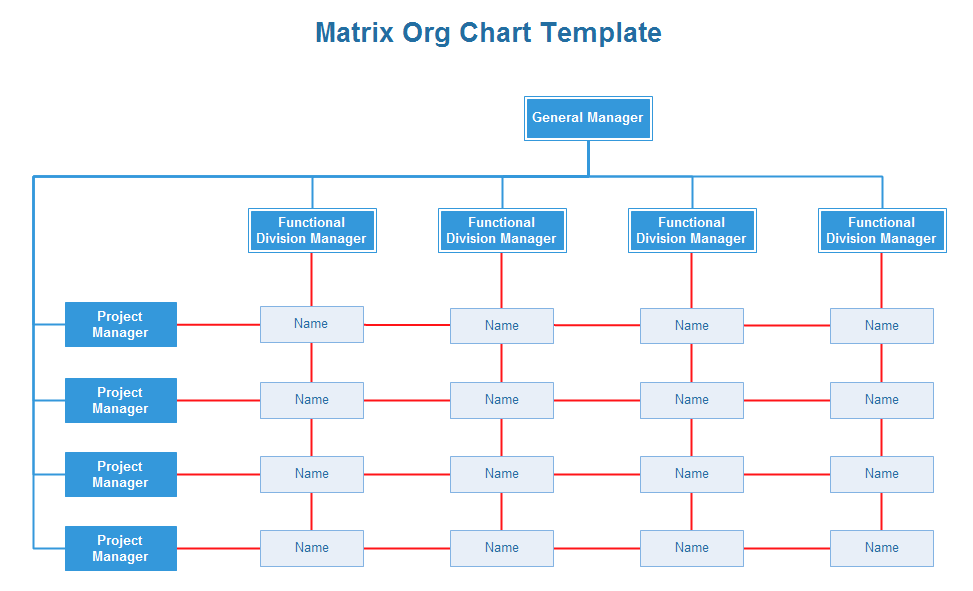Apr
28
General Introduction to Matrix Organizational Chart
Matrix organizational chart is composed of functional departments and the project teams for completing some temporary tasks. It’s a double tunnel command system. People have different roles and report to multiple managers. For example, when a project team wants to develop a new product, they will need to use personnel from the functional departments, such as engineering, research, and marketing. The personnel is under command of both the project team and their own departments.

Advantages:
- It’s easy to allocate resources between functional units and projects. Functional units focus on managing employees in their field, while project teams can focus on achieving the goals of a specific project.
- Employees in functional departments are very skilled in their specialized fields. All experts from various functional areas are ready to be in position whenever project teams need supports.
- Since the matrix combines two communities together, employees have opportunities to learn from each other and grown their career. It allows employees to create a more cooperative working environment, so as to make the organization more integrated. Therefore, the project team can better handle difficult issues and complex challenges.
Disadvantages:
- Unfixed location of the members may lead to temporary weak responsibility.
- Employees are supervised by both functional units and project team, which may cause conflict.
- Employees may have high workload because additional project work will be added in addition to their regular work.
- As they use mutual resources, it’s easy to cause conflict when the resource is in shortage. They need to define the priorities in advance.
- There will be a large overhead cost due to the excessive paperwork and information collection.

